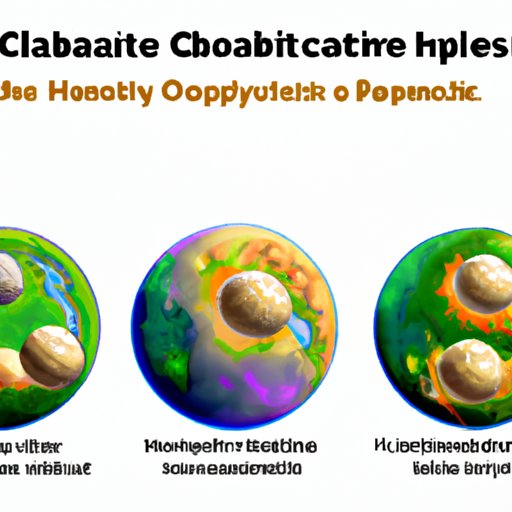I. Introduction
For centuries, people have looked up at the stars and wondered: are we alone in the universe? While the scientific community used to consider the possibility of finding life on another planet to be remote, there has been a shift in thinking in recent years. With the discovery of thousands of planets outside our solar system over the past two decades, the search for habitable planets has intensified. In this article, we will explore the possibility of life-supporting planets beyond Earth, the current state of the search for exoplanets, and the most promising contenders for supporting alien life.
II. Beyond Earth: Exploring the Possibility of Life-Supporting Planets in Our Universe
The possibility of life on planets beyond our own has been a topic of scientific interest for many years. With the recent advancements in astronomy and space exploration, this topic has become even more intriguing. Scientists have determined that there are a few ingredients for a planet to be habitable: it must have a stable atmosphere, a source of liquid water, and be located at the right distance from a star to receive the right amount of light and heat.
III. Alien Worlds: A Look at the Search for Habitable Planets
In order to find habitable planets, astronomers primarily use the transit method, which relies on measuring the dimming of a star’s light as a planet passes in front of it. Observatories such as NASA’s Kepler Space Telescope and the Transiting Exoplanet Survey Satellite (TESS) have used this technique to detect thousands of exoplanets over the past two decades.
IV. Life Beyond Earth: The Top Contenders for Supporting Alien Life
While there are many exoplanets in the universe, not all of them are able to support life. Scientists have ranked the top candidates for supporting alien life based on various factors, including the planet’s size, composition, and distance from its host star. Currently, the top contenders are Proxima Centauri b, TRAPPIST-1e, Kepler-438b, Kepler-62f, and Kepler-452b.
V. The Goldilocks Zone: Why Some Planets Might Be Just Right for Life
One of the most important factors in a planet’s ability to support life is its location in the “Goldilocks zone,” also known as the habitable zone. This zone is considered to be the area around a star where a planet can maintain a surface temperature that allows for liquid water to exist. Planets that fall within this zone have the potential to support life as we know it.
VI. The Hunt for Exoplanets: Searching for the Next Home Away from Home
The search for exoplanets is ongoing, with numerous observatories and missions currently in operation. One such mission is NASA’s James Webb Space Telescope, set to launch in 2021, which is designed to be more powerful and sensitive than any telescope before it. With each new mission, astronomers hope to uncover even more information about our galaxy and the planets within it.
VII. Out of This World: The Fascinating Science Behind Discovering New Habitable Planets
The discovery of new habitable planets is one of the most exciting areas of scientific research in recent years. It requires a combination of advanced technology and innovative methods, as well as a bit of luck. Scientists have overcome many challenges in their search, including separating a planet’s dim light from the glare of its host star.
VIII. Conclusion
While there is still much to learn and discover about the universe and the potential for life beyond Earth, recent advancements in technology and methods have given us reason to be hopeful. As we continue to explore and study the stars above us, we may one day find that we are not alone in the universe.
